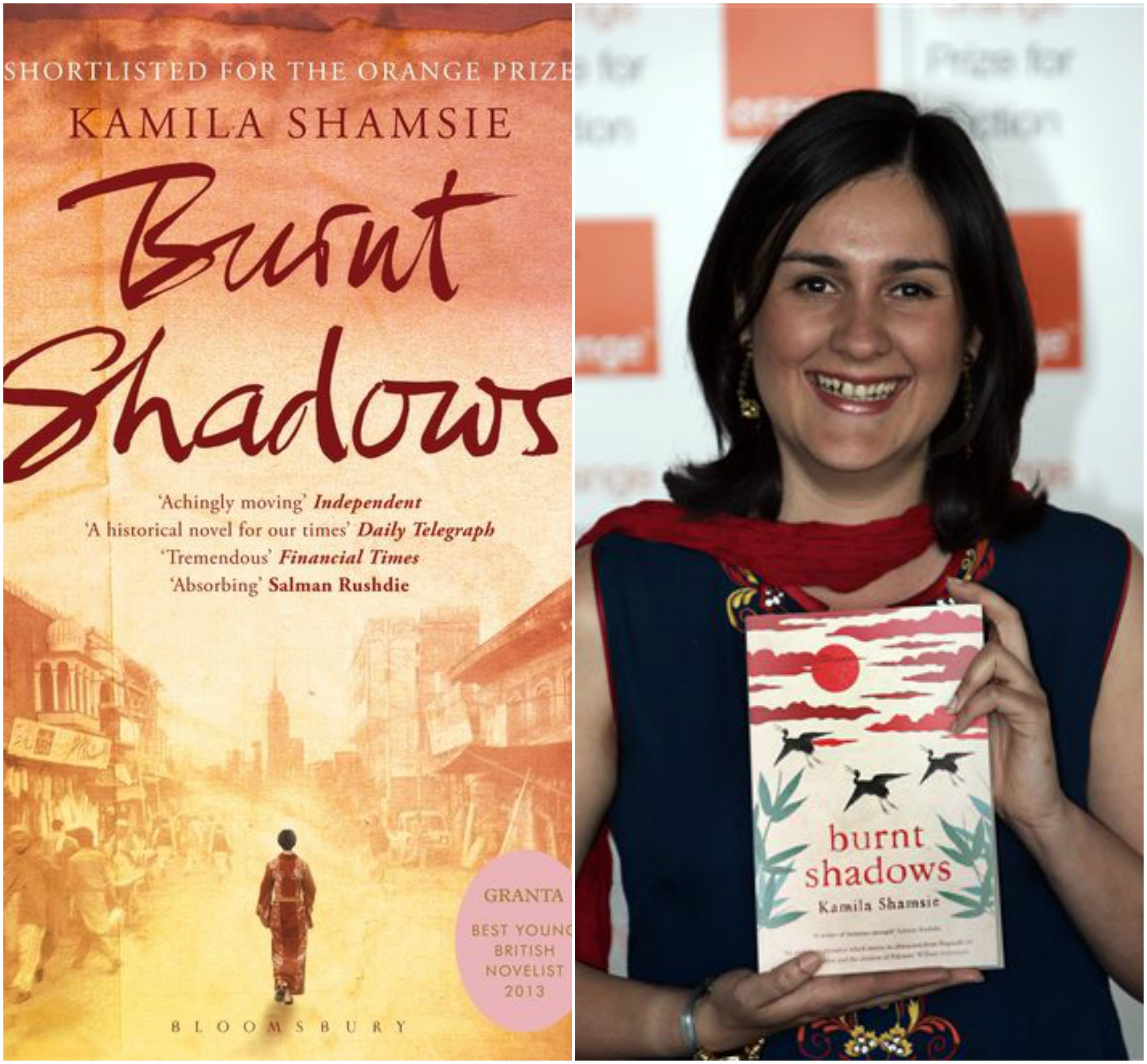Burnt Shadows by Kamila Shamsie portrays the journey of a Hiroko Tanaka, a girl of Japanese origin, across multiple geographies and cultures. The story begins with an arresting image of three bird-shaped burns on her back, an indelible reminder of the world she has lost.
From there, the story slowly unravels the interwoven stories of the Weiss, Burton and Ashraf families, spanned across generations. Hiroko, a survivor of the 1945 Nagasaki Bombing, Hibakusha as they say in Japanse, travels to India to meet her late fiance’s (Konrad Weiss) sister Elizabeth Burton.
As the backdrop changes to Delhi’s summer and it’s blazing gulmohars, Hiroko finds a surprising, yet truehearted friend in Elizebeth Burton and a soulmate in Sajjad Ashraf. Amid the India-Pakistan separation in 1947 and the subsequent violence, Hiroko and Sajjad find themselves married and are forced to settle in Karachi, Pakistan unexpectedly.
The juxtapositioning of noted massacres in human history and personal loss and sorrow is notable.
Fate keeps bringing Hiroko under the shadow of many historic events like the atomic bombing of Nagasaki, the India-Pakistan Partition, the Afghan War, nuclear tension in Asia and the 9/11 bombing. It is moving to see how a survivor of such mass destruction still holds on to humanity until the end of the book.
Burnt shadows is as poetic as it can be and a new meaning unravels in front of you each time you read it. The author has carved every character with such finesse that the situations and emotions characters go through, will create a lasting impression on you. Occasionally, the writing seems to be the excelling point rather than the story, especially in the end.
The story is cast in a huge geographical and cultural canvas. The juxtapositioning of noted massacres in human history and personal loss and sorrow is notable. The author brilliantly positions love and humanity in a contrasting environment of war and yet manages to invoke many emotions without confusion.
The wartorn Urakami, Delhi on the verge of Partition, Refugees at Karachi, the rawness of 9/11 bombing, form the crucial list of historical events Kamila Shamsie bases her canvas on.
Sajjad stood up quietly and walked over to her. “There is a phrase I have heard in English: to leave someone alone with their grief. Urdu has no equivalent phrase. It only understands the concept of gathering around and becoming ‘ghum-khaur’—grief-eaters—who take in the mourner’s sorrow.
― an excerpt from Burnt Shadows
Along with geographical grandness, Shamsie also handles the nuances of multiple cultures very well. Many characters in the novel come across multiple cultures as part of their journey and it is wonderful to see how each of them assimilate an entirely foreign culture and still keep a part of themselves true to their own culture.
The unfamiliarity of a new culture, the reluctance in pursuing its ways and the inevitable acceptance after knowing it in depth – this cycle is a recurring theme with every character and the author does it with a distinct emotional portrayal for each character. Another motif you find all over is the story of ‘The Spider’ in the Quran. Two families: the Buttons and the Ashrafs, with deeply interconnected roots, go through a series of events having a similar theme as that of the spider in the Quran.
Along with geographical grandness, Shamsie also handles the nuances of multiple cultures.
Another notable portion is the pitting of two popular ideologies, which are at odds with each other. She does it with such nuance that its impossible not to empathize with both of them. Abdulla, a conservative Muslim who finds himself at the wrong end of the law and Kim Burton, still raw from the wounds of 9/11 and her personal loss, come together in the end to voice out the obvious religion versus terrorism arguments.
My favourite part of that entire dialogue is a soft toy analogy using which the author chose to show how dissimilar backgrounds and situations lead to opposing beliefs in individuals and how difficult it is not to sympathize with both ideologies. Both arguments leave their own standing in the reader’s mind.
Considering how elaborate Shamsie was in the beginning, I was rather disappointed with the abrupt ending. I looked up from the last chapter as an unsatiated reader who could do with a more specific ending. Despite this little glitch, I enjoyed the read and really took my own sweet time to savour the book. In bringing together disparate worlds, Burnt Shadows evokes emotions in you, raises questions and provokes you.
Also Read: Persepolis Book Review: The Dilemma Of The Veil
Sreedevi is a software professional on a break. She loves to code, read and write. She can be followed on Instagram and Twitter.
Featured Image Credit: Bloomsbury Publishing and Newsician’s Blog




